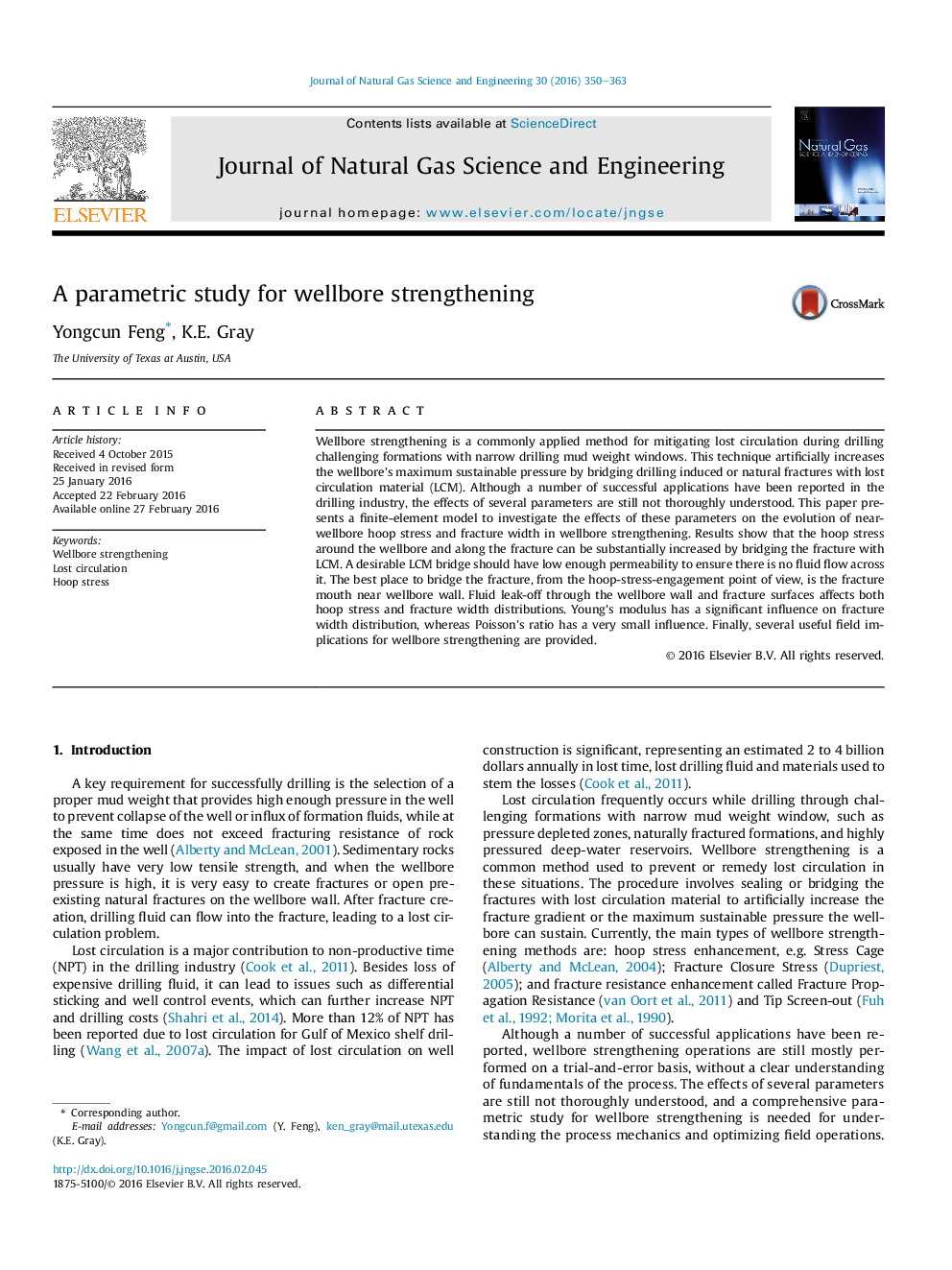| Article ID | Journal | Published Year | Pages | File Type |
|---|---|---|---|---|
| 1757180 | Journal of Natural Gas Science and Engineering | 2016 | 14 Pages |
•A finite-element model is developed for simulating wellbore strengthening.•Effects of various parameters on wellbore strengthening are examined.•Hoop stress around the wellbore can be increased by bridging the fracture.•The best place to bridge the fracture is the fracture mouth near the wellbore wall.•Several other useful field implications for wellbore strengthening are provided.
Wellbore strengthening is a commonly applied method for mitigating lost circulation during drilling challenging formations with narrow drilling mud weight windows. This technique artificially increases the wellbore's maximum sustainable pressure by bridging drilling induced or natural fractures with lost circulation material (LCM). Although a number of successful applications have been reported in the drilling industry, the effects of several parameters are still not thoroughly understood. This paper presents a finite-element model to investigate the effects of these parameters on the evolution of near-wellbore hoop stress and fracture width in wellbore strengthening. Results show that the hoop stress around the wellbore and along the fracture can be substantially increased by bridging the fracture with LCM. A desirable LCM bridge should have low enough permeability to ensure there is no fluid flow across it. The best place to bridge the fracture, from the hoop-stress-engagement point of view, is the fracture mouth near wellbore wall. Fluid leak-off through the wellbore wall and fracture surfaces affects both hoop stress and fracture width distributions. Young's modulus has a significant influence on fracture width distribution, whereas Poisson's ratio has a very small influence. Finally, several useful field implications for wellbore strengthening are provided.
